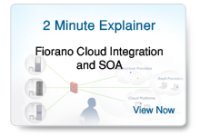Services Oriented Architecture Implementation Frameworks
Understanding the business benefits of Services Oriented Architecture Implementation Framework (SOAIF)
Executive Summary
Today's business environment is changing rapidly. Business dynamics and technological innovations have left organizations with a disparate mix of operating systems, applications, and databases - making it difficult, time consuming, and costly for IT departments to deliver new applications that integrate heterogeneous technologies. The key to success in the networked economy is not only being able to create business processes to automate value chains, but also to modify these processes as and when business requirements change.
A new category of enterprise infrastructure solutions, built on a service-oriented architecture (SOA), will deliver these benefits. SOAs are based on the notion of services, which are high-level software components that include Web services. Implementation of an SOA requires tools as well as run-time infrastructure software, which we collectively refer to as an SOA implementation framework (SOAIF).
Read the complete white paper to learn how SOAIF include all the distributed computing functionality an organization needs to develop, deploy, manage, and extend an SOA.

 Japan
Japan Germany
Germany
